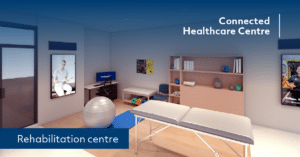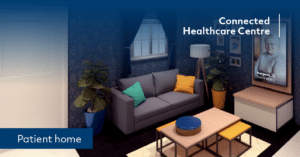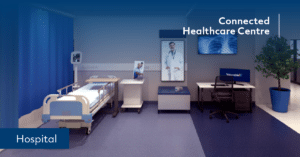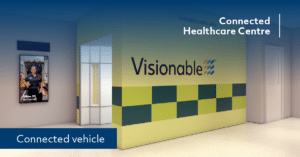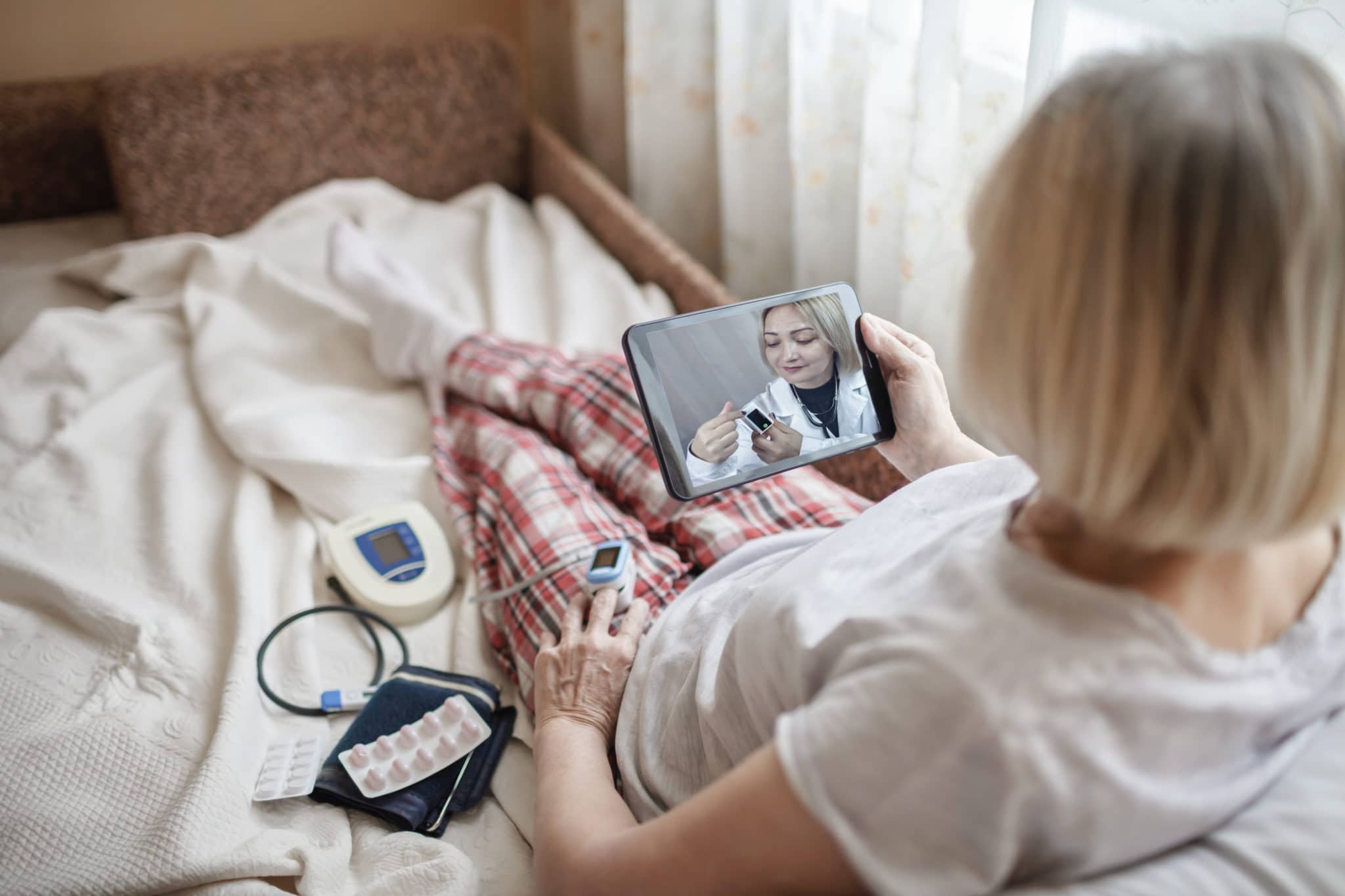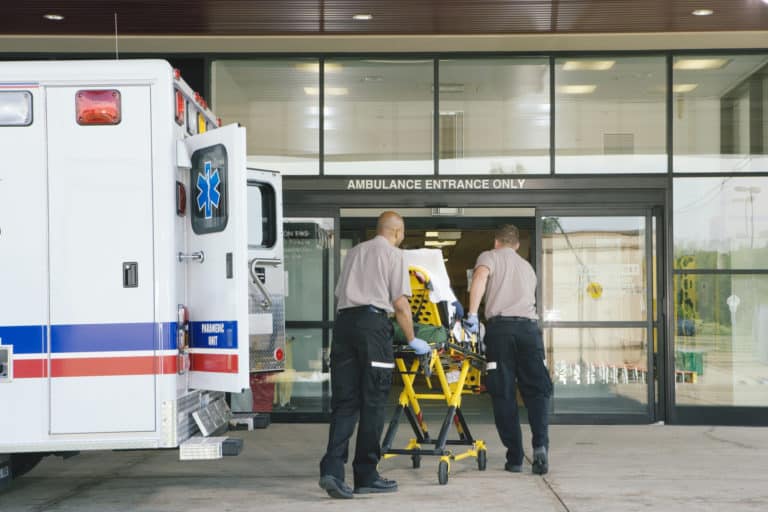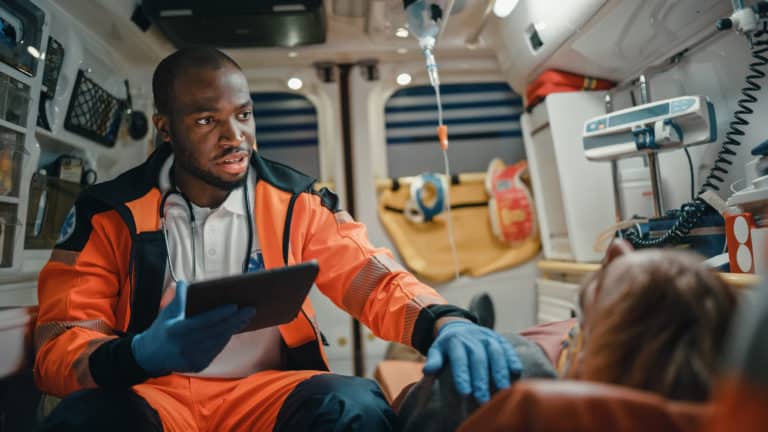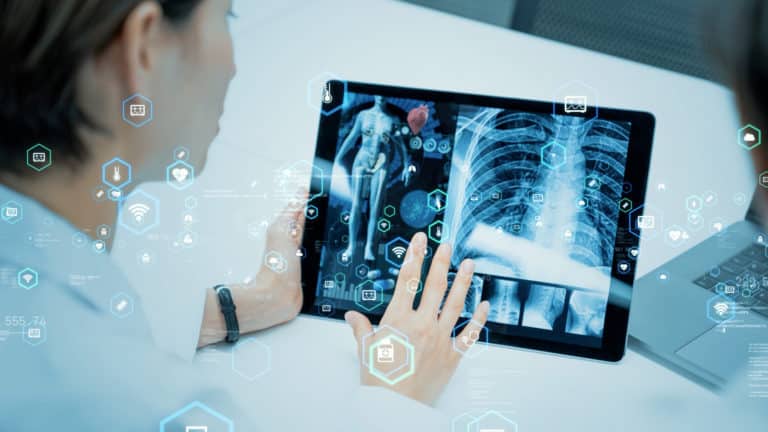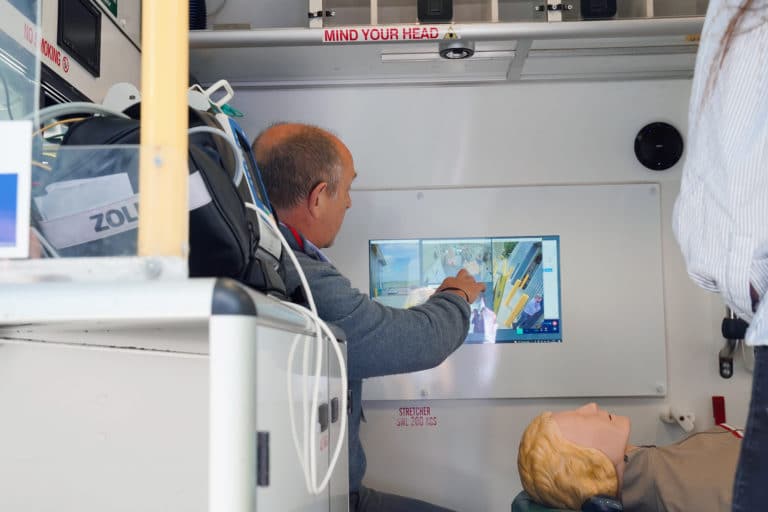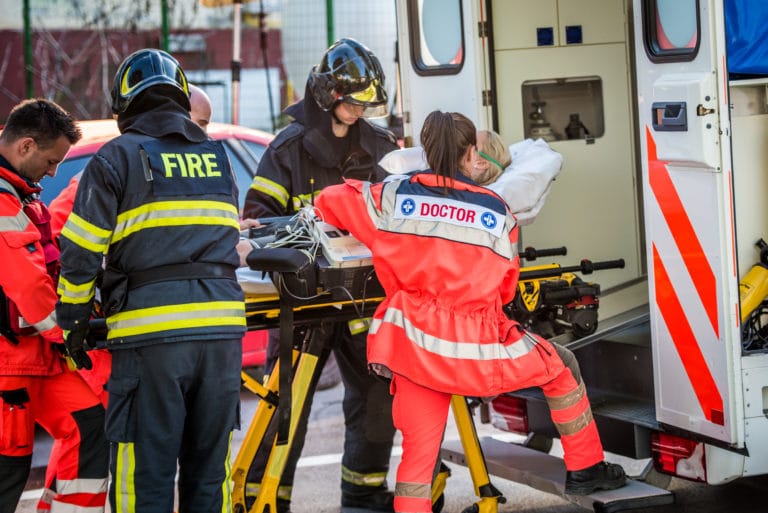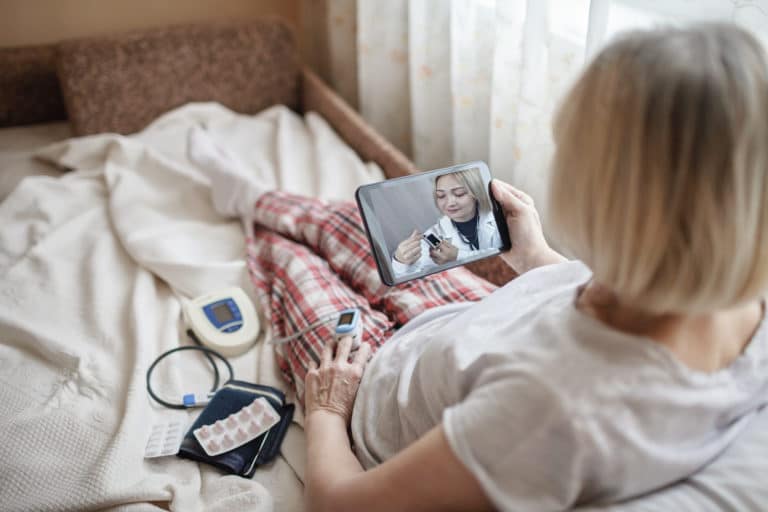Virtual wards work by using technology to extend the capabilities of a hospital into a patient’s home. By leveraging innovative technology, remote specialist clinicians can monitor and provide care to patients who would otherwise be in hospital. Virtual wards enable clinicians to meet patients at their point of need, regardless of modality and location – and crucially, without compromising on care quality in any way.
This futuristic model of healthcare has been imagined and discussed for years, often feeling like a far-off dream rather than a realistic option to prioritise right now. However, the pandemic accelerated the notion of virtual wards into a reality; care at home became an absolute necessity to reduce bed capacity, minimise COVID-19 transmission, and protect healthcare systems.
Now, as we emerge from the pandemic with many lessons learned, virtual wards have become a real, viable and attractive option that will increasingly support people at home with wide-ranging health conditions.
Technology-enabled, patient-centric care at home
Through technology, hospitals can maintain the management of patients via a digital platform. This management takes different forms; patients may receive support in the form of remote monitoring using apps, wearables, medical devices such as pulse oximeters, or even face-to-face care from community-based multi-disciplinary teams.
The NHS define virtual wards as:
“A safe and efficient alternative to NHS bedded care. Virtual wards support patients who would otherwise be in hospital to receive the acute care and treatment they need in their own home. This includes either preventing avoidable admissions into hospital or supporting early discharge out of hospital.”
Key functionality of a virtual ward:
- Remote monitoring equipment
- Virtual communication between the patient and medical staff, such as video conferencing or telephone calls
- Virtual ward data analytics
- Data security for patients
- Personal health data management
- Patient support and accessibility features in the digital platform
What does care on the virtual ward look like?
After assessing the suitability and consent of a patient to use the virtual ward, patients are given a tablet and equipped with devices that continuously monitor and report vital signs (including heart rate, oxygen levels, respiratory rate, skin temperature and blood pressure). This enables specialist clinicians to immediately be alerted if any signs of distress occur.
This information is transmitted to clinical teams who are monitoring a whole cohort of patients. A dashboard allows them to see individual patient measurements and alerts them to act when any patient moves outside their agreed parameters. Dashboards may be presented with red, amber and green alerts to empower clinicians to prioritise based on need.
“With a lot of our patients, we see them deteriorate before they even feel ill because their heart rate will go up or their skin temperature will go up.” – Virtual Ward, Norfolk and Norwich University Hospitals NHS Foundation Trust
By making the right information available to the right people at the right time, this approach to care promises to significantly alleviate the burden on frontline staff, as well as improve patient outcomes.
Who benefits from virtual wards?
Virtual wards are not suitable for all patients. However, there are many situations where they are helpful, including patients with chronic long-term conditions such as heart failure, respiratory conditions or who need ongoing post-surgical rehabilitation.
In such instances, there are a myriad of benefits to both the patient and their team of caregivers.
-
Benefits to patients
David Whitlock, a virtual ward patient, summarised his experience when he told BBC News: “The hospital is brilliant. But it’s not like being at home, is it?”.
Universally, hospital stays are renowned for uncomfortable beds, constant noise, lack of privacy and difficulty for visitors. Particularly for extended periods of time, patients typically prefer being at home. That way, patients can remain comfortable and around loved ones, leading to both mental and physical benefits – and overall improved outcomes.
In their 2022 report, Deloitte also noted that by equipping patients with more control and knowledge to influence their health and social care needs, the historical balance of power in healthcare is shifted. In this way, virtual wards enable a level of patient-centered care that has previously not been possible, including increased involvement from families and loved ones due to the remote nature of care.
-
Benefits to healthcare providers
There are some obvious benefits to healthcare providers of caring for patients at home, including reducing pressure on the NHS frontline and freeing up hospital beds. But it also has a positive impact on job satisfaction for healthcare workers, thereby supporting the challenge of attraction and retention in the field. The flexibility of care provision on a virtual ward enables supervision from home, which is particularly useful for those who may need to self-isolate, or for encouraging clinical staff considering early retirement to use their skills in new ways.
Healthcare workers report enjoying this new way of working, describing higher levels of satisfaction and a reduction in staff sickness. Sam Higginson, Chief Executive of Norfolk and Norwich University Hospitals NHS Foundation Trust, said: “We have yet, in nine months of operation, to have a single day of staff sickness on the ward.” This, in a workforce that is increasingly burnt out and struggling with staff shortages, is a benefit that cannot be overstated.
“I think it’s a better experience for me at work. I think it’s a better experience for them as a patient. And I think we get better outcomes with them if they can be at home.” – Community Nurse, Norfolk and Norwich University Hospitals NHS Foundation Trust
Innovation driving tomorrow’s healthcare
Virtual wards demonstrate the technology-enabled next frontier of healthcare delivery.
The future of healthcare will call for a hybrid of digital and face-to-face care. Digital care needs to become the default route to care, with in-person treatment only happening when it is needed.
To support Integrated Care Systems (ICSs) and service providers to meet this shift in healthcare delivery, virtual healthcare systems need a secure, next-generation platform supported by fast, reliable connectivity capabilities.
Together, Verizon and Visionable provide just this, with the aim of improving outcomes, reducing costs, and saving lives.
Visit the Connected Healthcare Centre
Visionable and Verizon have built a cutting-edge co-creation and innovation Centre to create an immersive experience of the connected future of healthcare.
Visitors can experience first-hand how our unique technology underpins the entire care pathway, from virtual wards to in-person care, all supported by secure and reliable 5G Verizon Connectivity.
